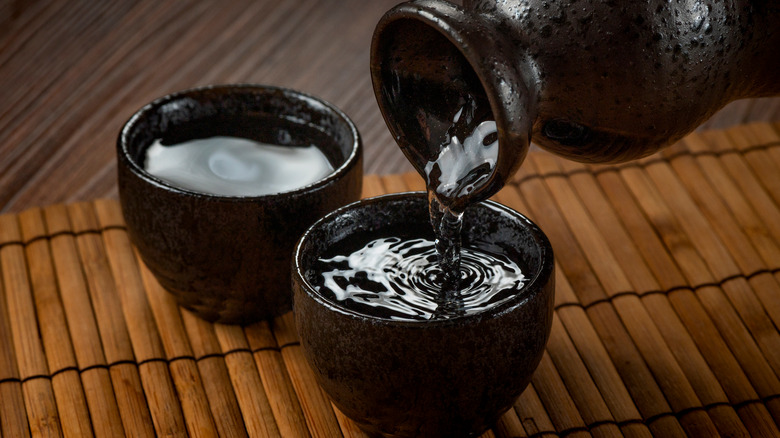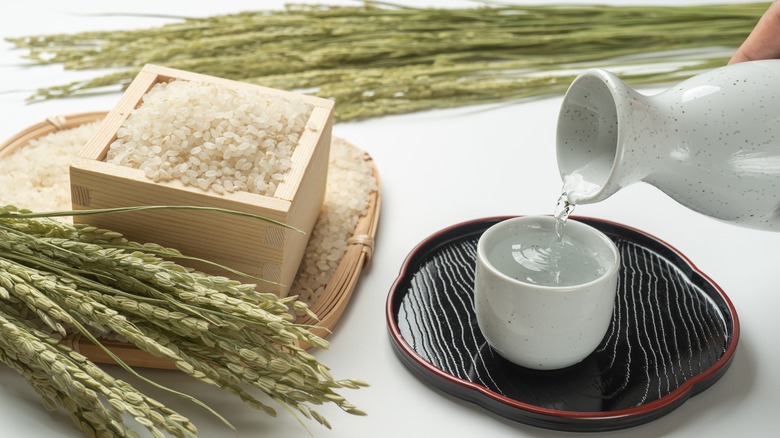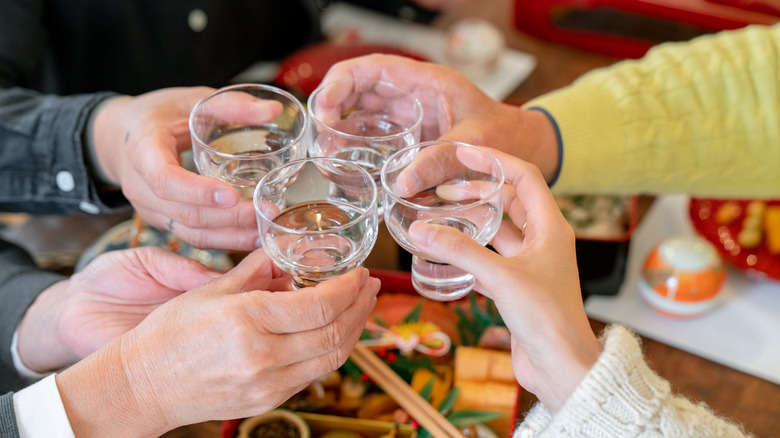How To Pair Sake With Food
Once a relatively niche beverage category relegated to the menus of sushi restaurants, sake has been experiencing a boom in the U.S., and is now receiving the respect it deserves. Thus, it's no surprise that sake proponents are encouraging diners to think about sake as something worth pairing with their meals, in the same way they might pair different dishes with wine.
Leo Lê, the Beverage Director at Momoya Soho, is one of these proponents. Lê has equipped the sushi restaurant with an extensive and varied sake list, including rare finds and seasonal bottles, and encourages the restaurant's guests to match various sakes with different dishes to enhance their overall culinary experience. Lê shared some tips with Food Republic on pairing sake with food, starting with the point that while sake will always be a great match for Japanese dishes, there are so many more possibilities out there for sake, which can make a great accompaniment for anything from pizza to bœuf Bourguignon.
"At the end of their meals, diners are often awestruck about how well various sakes paired with their dishes," Lê said. "I usually tell them that the sakes actually did all the work, and I am taking all the credit for my minimal effort."
Pairing sake by type
Understanding sake begins with its unique composition. Leo Lê explained that sake's high concentration of amino acids gives it a lot of umami, which allows for a lot of versatility when pairing with food. It also has a broad range of textures that can be explored in pairing situations. "Furthermore, sake has more residual sugar than wine, so it can counterbalance acid, bitterness, salt, spice, and amplify sweetness in foods."
For lighter dishes with delicate flavors, like ceviche or summer rolls, Lê recommends Niigata sakes, with their "restrained cereal and mineral aromas, light and water-like textures, dryness, and spiciness." For sweet and fruity dishes, like duck à l'orange or fruit-forward salads, the "intense tropical-fruit aromas, light textures, and complex, layered palates" of Fukushima and Yamagata ginjo sakes might be better suited.
But there are heartier sakes as well, which can stand up to more robust dishes. When cooking something with a lot of umami, like Cantonese orange beef or shepherd's pie, the "funky aromas, round textures," and cheesy, fermented flavors of Hyogo kimoto or yamahai sake will do the trick. And if you're working with dishes that are spicy and creamy, like chicken mole or sundubu jjigae, then the "fruity and lactic aromas, full-bodied and velvety textures, and sweetness" of Yamaguchi nigori sakes are an excellent match.
The best and worst sake pairings
The versatility of sake makes it great to experiment with when pairing with food. Any dish you can think of that has a bite of umami, whether it's a lox bagel with cream cheese or a salade Lyonnaise, will be enhanced by the umami in sake. But there's also merit in sticking with the classics — sake goes well with Japanese food for a reason, and matching sake to Japanese dishes based on region is a great way to experience the impact of terroir on sake.
Sakes produced along the coasts of the country have an affinity to seafood," Leo Lê explained, "whereas those made in mountainous regions are suited for heartier, umami-driven food, such as roasted poultry and root vegetables."
The one category of food that Lê warned against when pairing with sake is South Asian cuisine. While more flavorful sakes can handle a certain amount of spice and complexity, many South Asian dishes contain intense flavors and textures that can overpower sake's nuances. But aside from that, with sake in hand, the world is your oyster. In fact, trying oysters with sake might make you reconsider splurging on that bottle of Champagne.



